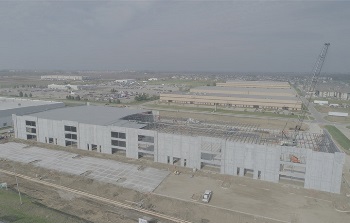Developing a build to suit (BTS) property takes time, effort and extra planning to make sure the client is receiving the end result that he/she or the company wants. From selecting a site, to finish options to turning over the property and keys, this process is extensive but exciting.
What is build to suit?
In Hubbell Realty Company’s case, we have a wide variety of build to suit opportunities, and many of those are on the market right now. As a commercial developer, we have many properties like Grimes Distribution Center and Birchwood I-80/35 that are industrial-sized buildings with not one, but multiple, build to suit opportunities.
What are the advantages?
In some cases, a new build to suit development can be more cost-effective and less risky to venture into than other types of development. The building is generally fairly uniform, and the developer has less leasing risk knowing who the end-user or tenant will be.
The largest advantage is that the building is designed and properly built to the tenant’s specifications and desires. The tenant has specific input with conceptualization, design and throughout the construction phase alongside architects, engineers, consultants and the developer.
An important note is to consider if the design is up to “market standards.” If it’s not up to these standards and the current tenant moves on or looks to sell in the future, the specialized design or uniqueness may detract future buyers.
Another advantage to using a commercial developer to meet your building needs is that it protects the tenant from handling all of the in’s and outs of the development of the project. This can save the tenant time and resources, yet it allows the commercial developer the creative freedom and grounds for experience.
What are the costs?
The costs can vary based on many factors throughout the build to suit process. The costs of building may be more upfront verse leasing over an extended period of time. However, the finished space and efficiencies may help offset future, ongoing costs. Costs can come from:
- Location
- Size
- Length of Lease
- Specific Improvements
- Type of Building
- Credit of the Tenant
- State of the Market


Comments
ADD A COMMENT